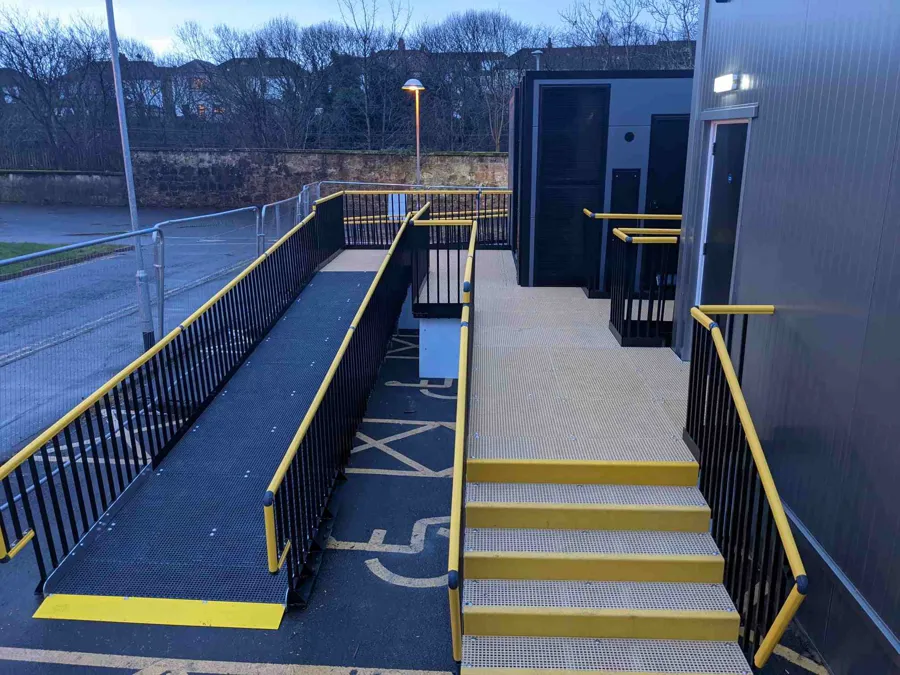
You are visiting the Canada Kee Safety website from United States. Would you like to go to the United States site?

As Canada continues to make strides towards a more inclusive society, barrier-free access to buildings is no longer a luxury. It is a legal responsibility and a guiding principle. From national standards, specifically, the Accessible Canada Act (ACA), to provincial regulations, such as the Accessibility for Ontarians with Disabilities Act (AODA), building owners, facility managers, and contractors must ensure that entrances to public and commercial properties are safe, inclusive, and fully compliant.
A key component of inclusive design entry systems is a wheelchair access ramp for buildings. These ramps must not only meet slope and dimensional standards but also ensure safety, durability, and adaptability to diverse architectural circumstances. Modular ramp and railing systems in Canada from Kee Safety are tailored to accommodate individuals with mobility challenges and provide safe access solutions for facilities.

AODA sets a goal for the province of Ontario to be fully accessible by 2025. Unless an extension was requested by December 31, 2023, the time is now. AODA mandates full accessibility for both public and private buildings. This means AODA-compliant access solutions account not just for wheelchair users, but also individuals with walkers, strollers, canes, or limited mobility.
The ACA was enacted in 2019 and will take full effect in 2040. Guided by the AODA, the provinces of Quebec, Nova Scotia, Manitoba, and British Columbia have passed or proposed legislation to mandate public, private, and commercial accessibility solutions. Penalties can be harsh for non-compliance, up to $50,000 per day for unincorporated businesses and up to $100,000 per day for incorporated companies.

Obeying these laws means providing an accessible building entrance. As the ACA and provincial regulations come into effect, and as building codes evolve, modular accessibility ramps are a proactive and ideal way for owners and managers to comply immediately and in the future.
These barrier-free ramp systems must adhere to strict slope, width, and guardrail standards for accessibility ramps specifications. Requirements include:
Conventional concrete ramps can be costly, inflexible, and create major disruptions during installation. Wood ramps are also labour-intensive to install and require significant maintenance.
The Kee Safety RightWay Pro modular ramp system is a versatile alternative designed to meet Canadian accessibility codes while simplifying installation. They can be customized to fit various site conditions, including uneven terrain and limited space, and provide temporary access or a permanent solution for facilities of all sizes. Key benefits include:


An essential part of a public building entry ramp is a robust and reliable handrail system. Kee Klamp Access ADA Railings are constructed of galvanized steel and can be powder-coated to further resist rust and wear. The smooth handrails are code-compliant, and the modular design means the railing system can be adapted to unusual configurations or retrofit projects.

RightWay Pro ramps and Kee Klamp railings create cohesive, compliant, and visually appealing accessible entrances to buildings. With an aging population and increasing awareness of the importance of inclusion, the need for barrier-free wheelchair ramps and smooth handrail systems will continue to rise.
Whether updating an older building or designing a new public facility, embracing modular accessibility ramps and railing systems is about more than meeting regulations. It shows a commitment to equity, dignity, and universal usability.